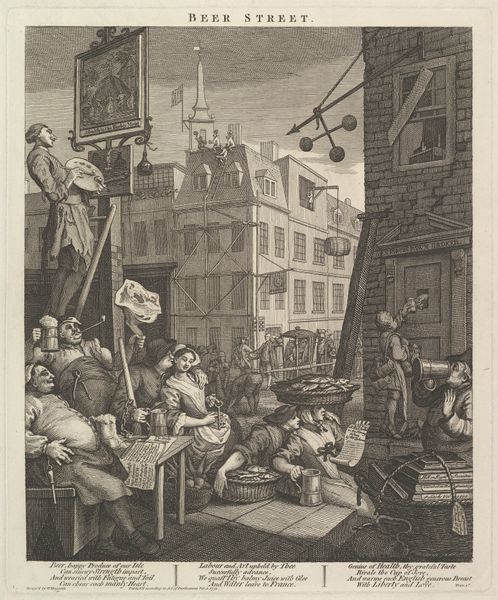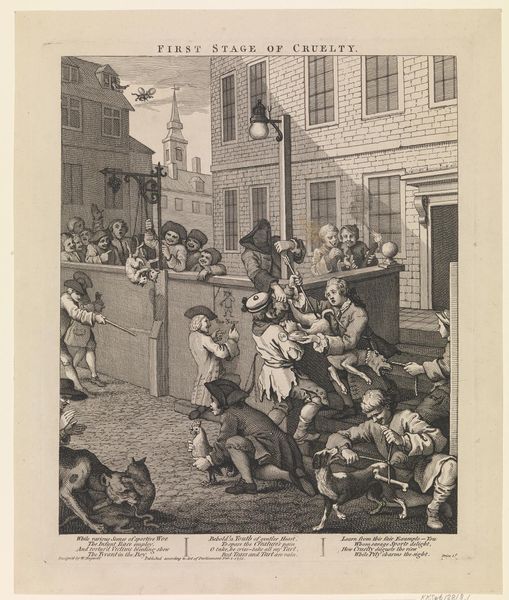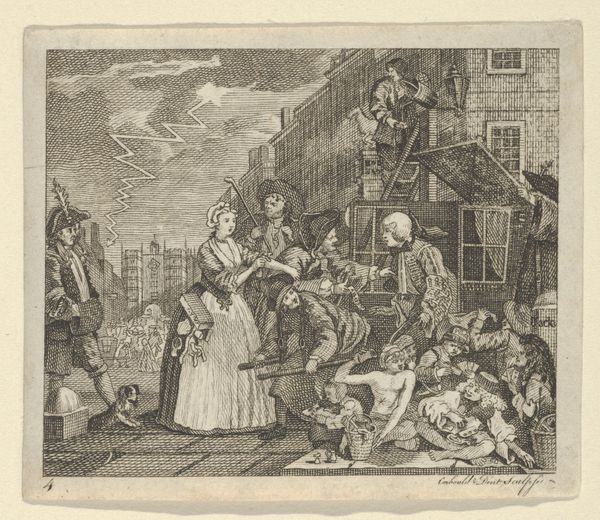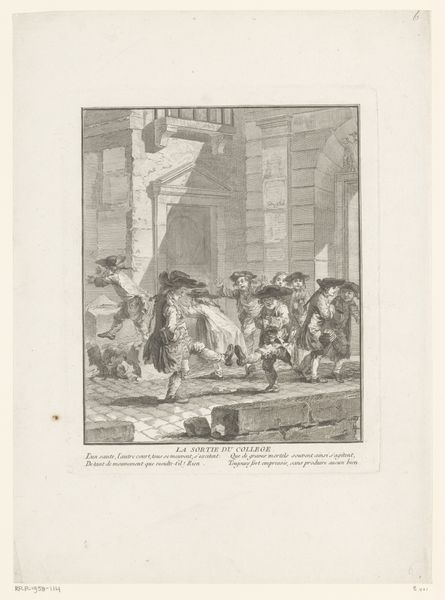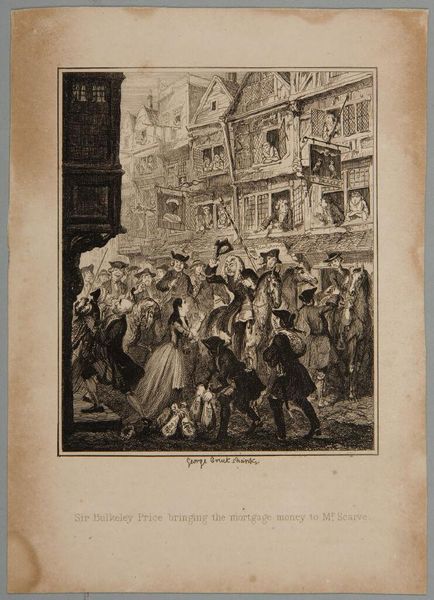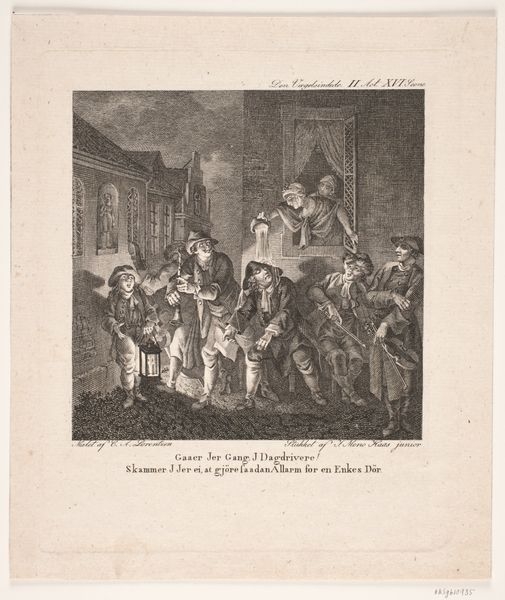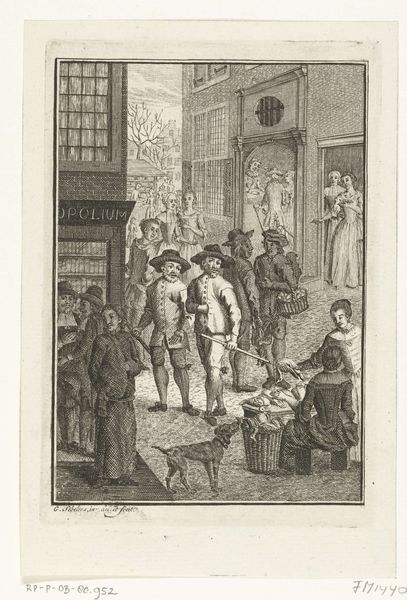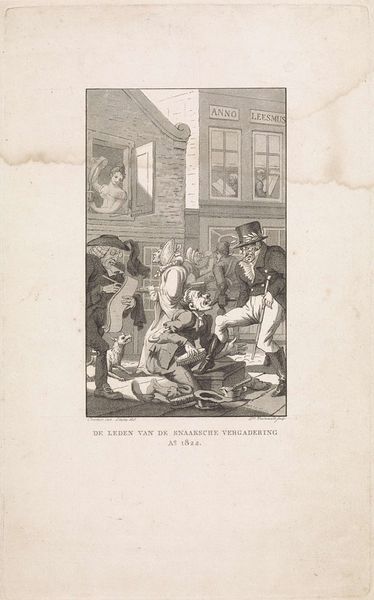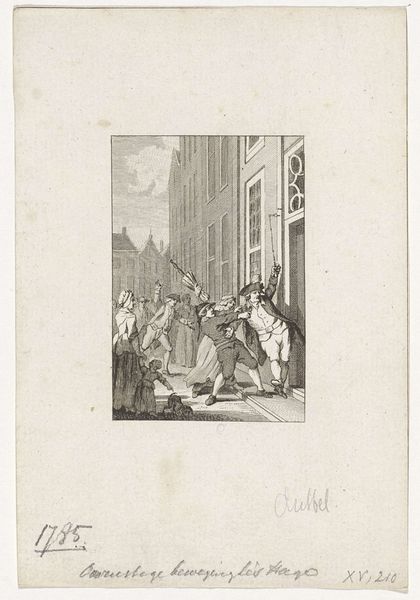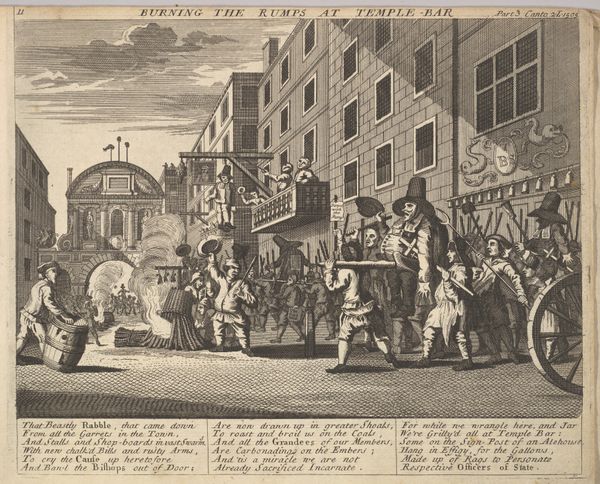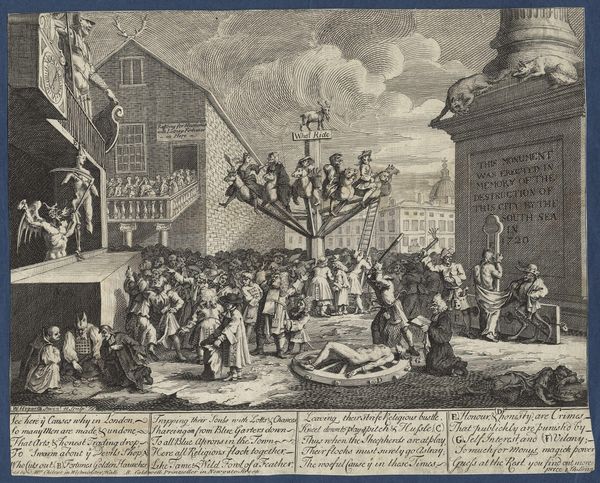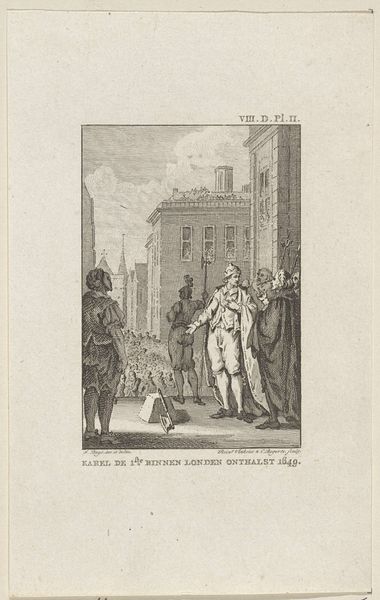
print, etching, engraving
#
baroque
# print
#
etching
#
cityscape
#
genre-painting
#
engraving
Dimensions: 14 x 11 3/4 in. (35.56 x 29.85 cm) (sheet)
Copyright: Public Domain
Curator: Hogarth’s “Beer Street,” made around 1751, really bursts with the everyday life of 18th-century London, doesn't it? An etching and engraving, teeming with people. What strikes you about it? Editor: Immediately, it's how active and...well, pleasant it seems. Like a glimpse into a world where everyone's genuinely enjoying themselves, not at all gritty and grimy as history often paints it. Is this street idealized, or is it a reflection of its time? Curator: I think it's more than just idealized; it's a statement. Look at the industriousness; folks are working, building, painting signs—a thriving community, energized, literally, by beer! You notice the well-fed figures enjoying themselves openly? It's all very deliberate, and contrasted by another piece called "Gin Lane." Editor: Ah, so this is Hogarth advocating a sort of material culture where the means of production - in this case, breweries and agriculture symbolized in “beer”- drive industrious and relatively healthy consumption habits within London society. The focus on artisanal work rather than say...financial dealings, indicates a societal yearning for authentic labor too. Curator: Precisely! And it's fascinating how Hogarth utilizes the very tools of mass production—etching and engraving—to get this message across. Think about it; prints could be distributed widely, reaching a large audience. Editor: Right! The materials become the message; mass-produced images for mass consumption and a message on healthy production and material consumption. Hogarth understood his audience, the social currents, how goods and information spread—genius! Though I wonder about the laborers themselves—what were their conditions of making the "beer street" possible in the first place? Were their labors rewarded likewise, with brimming tankards and meaty pies? Curator: That's where the satire and perhaps some uncomfortable truths enter the picture. Hogarth, through his masterful composition, does paint a picture that could be taken at face value as an advertisement for the lifestyle but, at the same time, urges viewers to think deeper about social class divides. It's interesting you bring it up! Editor: I agree! I keep coming back to those active buildings under construction here, all suggesting both upward mobility through labour and simultaneous consumption in everyday pleasures like eating well or indulging moderately; both depend on one another reciprocally in his image making…a careful interplay indeed! Curator: A potent reminder that art can celebrate, critique, and provoke dialogue about the world around us—even the ones involving frothy beverages! Editor: Yes—thanks to Hogarth and his attention to detail, we can still examine our relationships between working class production and leisure habits across the centuries!
Comments
No comments
Be the first to comment and join the conversation on the ultimate creative platform.
